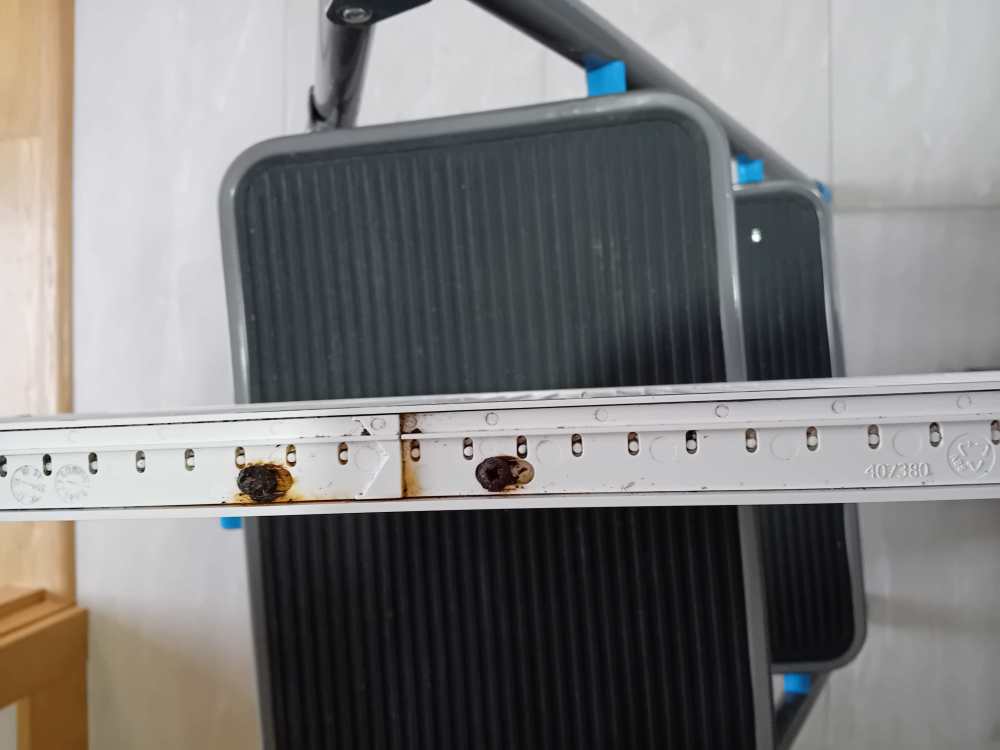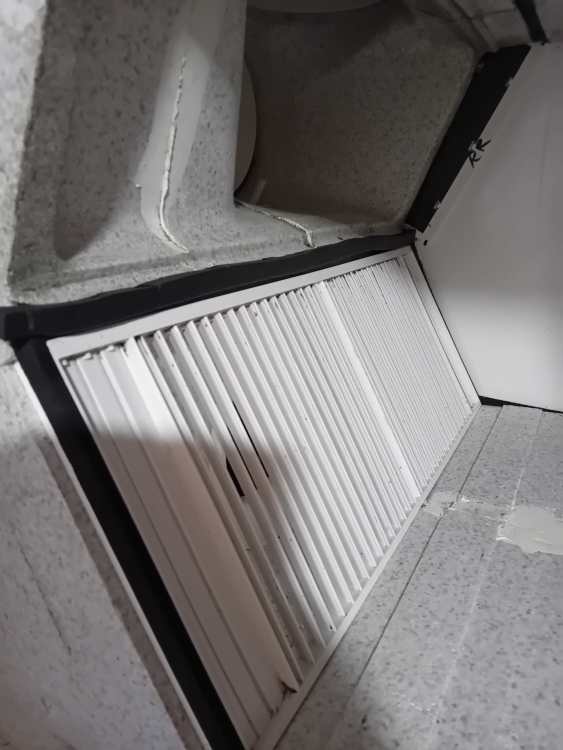-
Posts
3761 -
Joined
-
Last visited
-
Days Won
23
Stones last won the day on November 2 2023
Stones had the most liked content!
Personal Information
-
Location
Orkney
Recent Profile Visitors
28403 profile views
Stones's Achievements

Advanced Member (5/5)
1.1k
Reputation
-
Just an update on this - and a resolution. Convinced it was some air that had managed to get trapped in the pipework, I drained down the cold water using the valve just above the stop cock, then turned the water back on with all the taps open and showers on. First attempt unsuccessful as the low pressure remained at the shower. A second drain down via the stop cock valve, but this time I removed the shower bar. On turning the water back on, it duly spluttered out of the cold feed to the shower. Kept it running until constant flow. Refitted the shower bar, and problem solved.
-
Certainly where I am, ambient air rarely gets above what the internal house temp may be. Overheating really is a function of solar gain for us, welcome in winter (like having a fire on), probably the most intense in April. Given the comparatively low flow rates of MVHR, I can't say I've noticed much of a difference - ours was set to come into operation when internal house temps exceeded 22C.
-
I decided in the end to see what the difference would be without an operational summer bypass in terms of summer internal house temps. Up until this point, can't say it makes any noticable difference. I haven't got the details to hand but I recall finding an alternative and much cheaper supplier for the actuator. I also sought a price for a new louvre from vent axia. That was going to be over £100. Central gate open = normal heat recovery mode. Summer bypass the 2 smaller end louvre sections would be open, thus bypassing the core.
-
Around the turn of the year we experienced what I would describe as a brief moment of water hammer when we turned on our bathroom basin cold water tap, followed by much lower flow of cold water than normal. All other cold taps in the house were at normal pressure. I checked the aerator and swapped out the cartridge but this made no difference. Working back from the tap, I tried turning the isolator on / off several times, but again no difference. One thing I noticed was that our toilet cistern was filling much slower than normal during this period, indicating the constriction to the water supply was somewhere before the branch that feeds that toilet and sink. After a couple of weeks the pressure went back to normal and everything seemed fine. We returned from holiday yesterday (during which time the water had been turned off at the stopcock). On running the shower, there was a brief moment of water hammer before the cold flow reduced. As with the basin before, hot water unaffected. I can only surmise that there is some sort of constriction in the cold water branch pipe that feeds this particular bathroom (end of the pipe run). All other cold outlets in the house remain full pressure. The question is what can I do to try and resolve the issue, assuming there is indeed some sort of constriction in the copper pipe?
-

Are we targeting ASHP's at the wrong market?
Stones replied to ProDave's topic in Air Source Heat Pumps (ASHP)
I've been reading the comments with interest. So the original question, Are we targeting ASHP's at the wrong market? I think the answer is an undoubted yes. Or you could say right market, wrong product. For political expediency, ASHP's are being touted as a boiler replacement. But for the vast majority of existing homes they are not, due to the other work required to allow them to operate optimally / at comparable running cost to gas. If ASHP's were capable of delivering a CoP of 3.5 - 4 with flow temps of 55C - 60C, they would be. Until there is no need or requirement to significantly upgrade the heat distribution system, and for the most part I'm referring to radiators and associated pipework, the public are not going to bite. Improving insulation / airtightness for such housing stock is a red herring, useful in reducing energy use, but is not going to get most homes down to the point where they do not require heating. Take a mid 90's house (that I happen to know well) with an oil boiler and radiators. If the owners wanted to fit an ASHP, they would need to replace all their radiators with 3 to 4 times larger in terms of btu heating capacity (up to twice the physical size if they could accommodate double radiators) to achieve comparable running costs. Carpets would have to come up, to get to floor hatches, all the microbore pipe to the radiators would need stripped out and replaced with 15 - 22mm pipework. Time, disruption, and significant cost if they could even get anyone to do the work. And what would they get out of it - a warm fuzzy glow that they had reduced their carbon emissions? Looked at objectively then, why would anyone put themselves through all that? You want change, it needs to be straight forward, meet peoples needs and be affordable. The government needs to move away from ideologically dictating technologies, to setting the framework for the reduction of emissions / reducing the use of FF. Let the market develop and implement the solution. -
Welcome back @Jeremy Harris, good to hear from you. Funnily enough saw your name last week on recent posts on a forum about VOIP telephony. Really good to hear Sunamp are stepping up. Hopefully the decoration side and tidy up won't be too onerous (insurance claim?) I certainly looked long and hard at the Sunamp back in 2016, but in the end went with an ASHP and 300 litre UVC set up for a number of reasons, one of which was wondering what future support would look like given our location. The ASHP / UVC set up has worked really well, but I was fortunate in having the space to make that decision.
-
The main challenge on the outer isles is getting a contractor, as they are generally busy so are in a position to pick and choose, and new builds certainly preferred to large scale. Two contractors work with ICF here. In addition as has been indicated, additional costs in terms of getting materials to the Isles, and worker accommodation costs, albeit these are offset to an extent by lower plot prices. Getting material delivered can be challenging. As @ProDave mentioned, my choice of treatment plant was ultimately decided on the grounds of delivery. You will probably find that you have to organise onward shipping from Aberdeen for many things - easy enough to arrange as there are various firms who do it, it's just another cost. Planning wise, its a very relaxed regime for the outer isles. @westbound are you already living in Orkney?
-
Sadly, nothing to offer other than a regular clean and treat the moulded area with bleach. I find that when I remove the heat exchange core, and angle it over, a fair amount of condensate drains out, but generally this remains free of mould. The plastic louvre grill tends to have mould grow on it, as do the extract fan blades, so I clean the lot, and make sure the drainage hole and pipe run off is clear and free flowing. Having measured the temperature of supply air into the house, my unit seems to operate at 90% heat recovery. Added to that the higher relative humidity and moisture levels, it's perhaps not surprising there is so much condensation - but at least shows the unit is working.
-
At each end of the louvre assembly, the 3 slats you can see closed. The bypass forms when the solenoid closes the main louvres, and opens the 3 slats at each end. This prevents air cycling through the heat exchanger by guiding the airflow (with the aide of foam on each end of the heat exchange core) around the heat exchange core.
-

Mvhr funny noises and dripping
Stones replied to Pocster's topic in Mechanical Ventilation with Heat Recovery (MVHR)
Have to agree with this - I wonder if condensate has formed in the heat exchanger as it's pulling air from outside inside - if the extract air was cooler than the incoming air, and the incoming warm air was moisture laden, it would potentially condense on the intake side of the exchanger fins, then run down through the fins and collect where it has. -

Mvhr funny noises and dripping
Stones replied to Pocster's topic in Mechanical Ventilation with Heat Recovery (MVHR)
Same here, on the extract side, condensate drain blocked with biosnot, water built up until the fan started churning it. I -
Following on from this original topic, I have today just completed the annual main clean and service of my MVHR unit, now 8 years old. With our unit now located within the heated envelope of the house (rather than our cold loft as it was originally), the blocked condensate drain issue has not arisen again. There is always some evidence of mould growth on the extractor fan blades and extract fan chamber, but given this is a cold and damp / wet part of the unit, that is hardly surprising. I did however uncover 2 new issues: 1. The summer bypass, which consists of a plastic louvered fin assembly in a rectangular frame, opened and closed by a solenoid, was stuck in the closed position, i.e. on summer bypass. Closer inspection revealed the end of the solenoid which allows the unit to switch from heat recovery to summer bypass had broken off. On attempting to operate the louvres by hand, they were stuck solid. The screws securing the louvre assembly to the frame had corroded to such an extent that they prevented movement, which in turn caused the solenoid to break. The screws were so far gone that they dissolved on contact with a screwdriver. With the gentle persuasion of a mallet, I was able to tap open the louvre assembly to the heat recovery position. This means that I now have no summer bypass as there is no means to close the louvres. Not an urgent problem given the time of year, but something I will have to think about getting a replacement part for. Top tip therefore, lubricate the screws to try and slow / prevent corrosion. 2. Eight years of removing and re-inserting the core has torn / destroyed one of the seals (pictured hanging). Fortunately, I had some neoprene adhesive backed tape which I used to replace. Other than that, (and a previous fan bearing replacement) the unit is still going strong.
-
Indeed. Storage is of course measured in kWh.
-
Sort of. I think this is the real plan: https://www.telegraph.co.uk/business/2024/07/11/chinese-electric-cars-to-power-your-home-in-octopus-deal/#:~:text=A Chinese electric car maker,parked in their driveway... You can just imagine how the conversation went - Minister, if we prohibit the sale of ICE and force everyone to buy electric cars and we tell people to plug them in to get a 'discount' on their electricity bills, that gives us 33 million x 60 kWh of storage, which is nearly 2000 GWh of storage, which gives us 40 days of energy security even if we generate nothing for a few days. And the best part is, it won't cost us a thing, the public will pay without even realising. Even better we'll finally be able to introduce road pricing and increase revenue from that. Minister, this will transform our country, and you'll go down in history with a legacy few will ever surpass. Whilst there are obvious flaws to such a plan, you could see how a politician would get on board with such a vision. Nothing wrong of course with the idea of using your car as a power bank. Whether its better for the grid vs distributed storage at local / household level is a different question.





